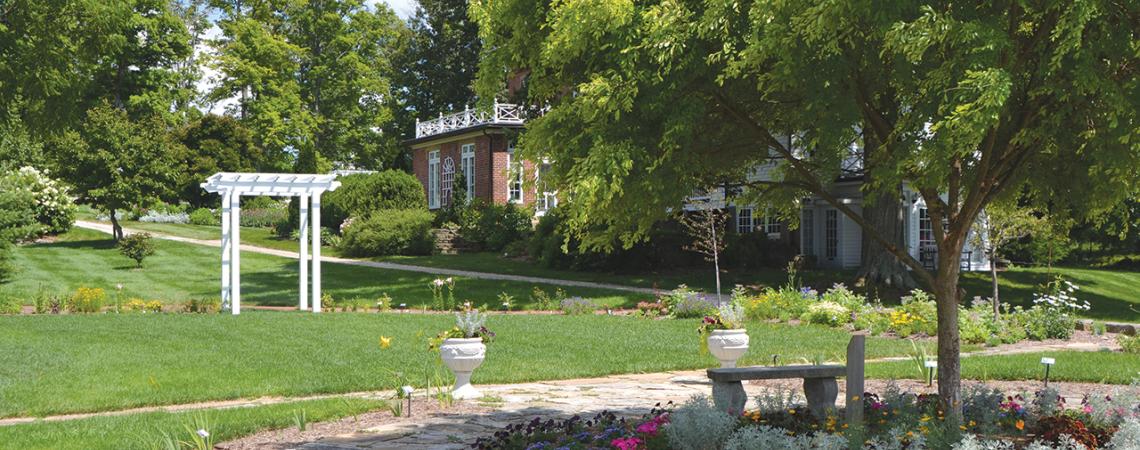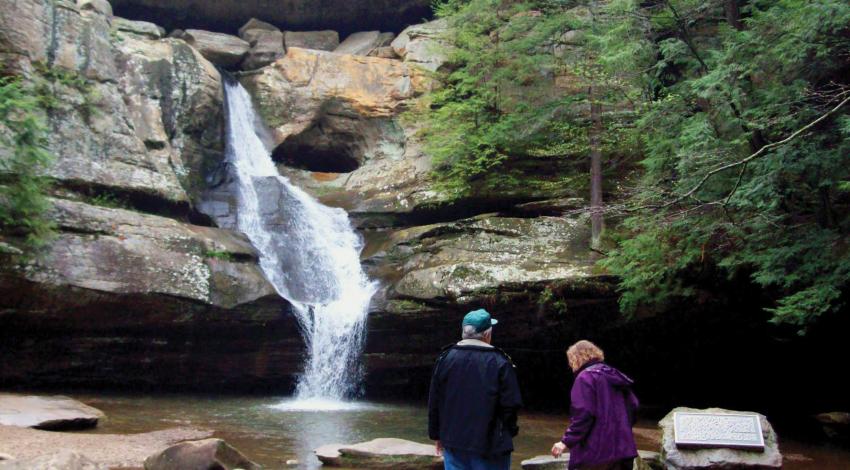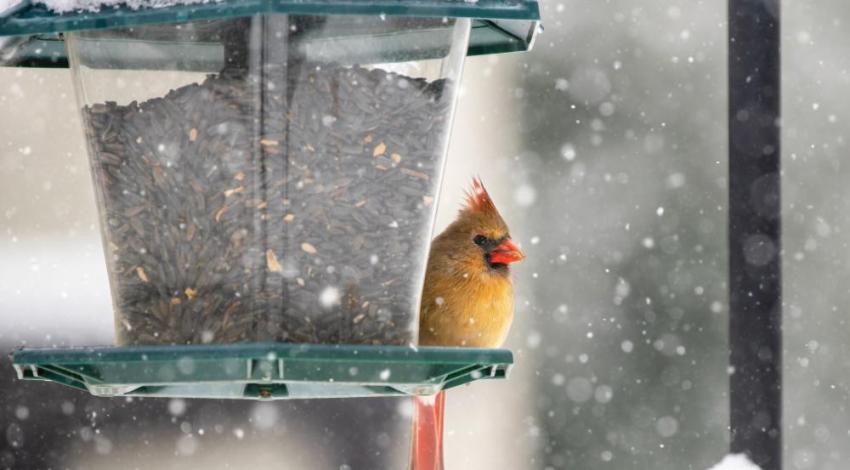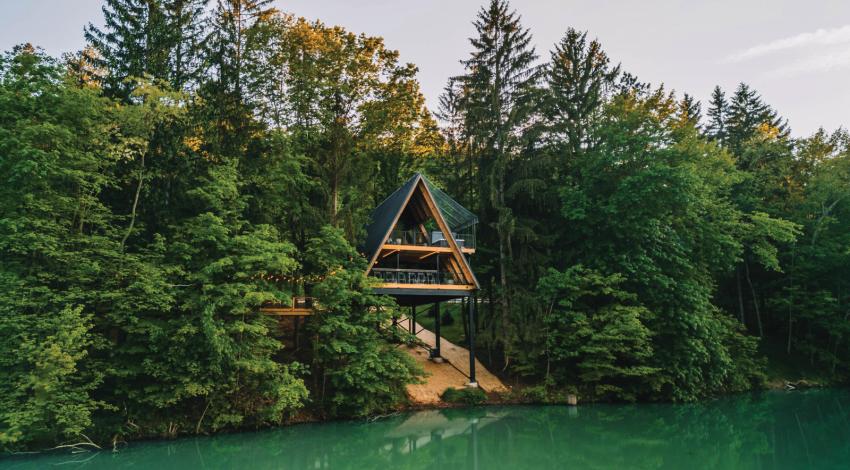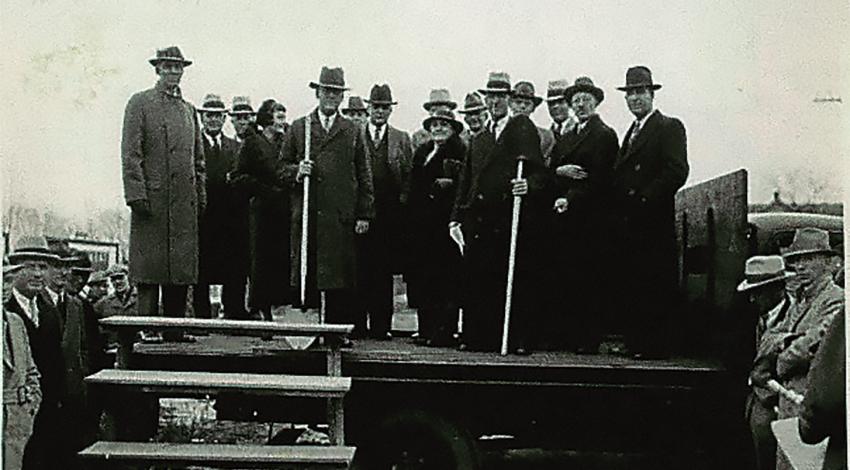Dawes Arboretum in Newark
Successful individuals often amass museum-worthy collections reflecting their interests — works of art, luxury cars, fine wines, even historic structures. While Libbey’s glass earnings launched the Toledo Museum of Art and Ford’s automobile funds built Greenfield Village, Pure Oil Company President Beman Dawes pursued a more down-to-earth passion: He collected trees.
Growth from the start
In 1917, Dawes and his wife, Bertie, planted 50 sugar maples on their 140-acre farm near Newark, which they christened “Daweswood,” and commenced a methodical accumulation of both land and flora. Seeking specimens suited to central Ohio’s climate, Dawes brought in trees from around the world and arranged them in groups at Daweswood. By 1929, they had acquired nearly 300 acres of land on which grew more than 50,000 trees, and the Daweses established The Dawes Arboretum as a private foundation. Their goals included fostering research; giving pleasure to the public; and increasing the general knowledge and love of trees and shrubs.
Today, the Dawes Arboretum is an internationally known treasure that staff historian Leslie Wagner calls a museum without walls. Encompassing nearly 2,000 acres and some 17,000 labeled plants, it’s one of the nation’s largest arboretums and attracts upwards of 250,000 guests per year. USA Today has named the arboretum one of the best U.S. botanical gardens. Its main grounds, including the original farm, are on the National Register of Historic Places, and Botanical Gardens Conservation International ranks its maple collection No. 12 in the world.
Family tradition
Born and raised in Marietta, Dawes acquired his appreciation for trees while working at the lumber business his father, General Rufus Dawes, opened after the Civil War. “Rufus Dawes taught Beman how to size up a tree, so he could tell at a glance its species, age, and value,” says Mike Ecker, the arboretum’s curator of living collections. A member of the Iron Brigade, Rufus Dawes fought at Gettysburg, but he was not the first — or last — Dawes to have a hand in American history. His great-grandfather, William Dawes, joined Paul Revere in making 1775’s midnight rides to warn that the British were coming, and the general’s eldest son, Charles Gates Dawes, not only became Calvin Coolidge’s vice president, but was also awarded the 1925 Nobel Prize.
Although Beman and Bertie Dawes owned several homes, their primary residence was in Columbus. As nature lovers, they often picnicked on that wooded farm they later called Daweswood, and they bought the property after one fateful visit when Beman stepped in to stop workers from cutting down some of its trees. Soon they had transformed its Italianate farmhouse there into a comfortable country retreat. While Beman procured trees, Bertie planned Daweswood’s gardens and kept journals about her roses, tulips, and peonies.
A living laboratory
Along with his own deep personal interest in selecting the arborteum’s trees, Dawes also sought advice from experts, including Ohio State forestry professor Norman Scherer and state forester Edmund Secrest to help him decide what to plant and where. Cultivating those eminent arborists soon led to the practice of using the arboretum as a land lab. The American Chestnut Foundation, for example, currently keeps a tree test plot there, and the U.S. Department of Agriculture is studying its borer-resistant Asian ash trees.
Also distinguishing The Dawes Arboretum is the family’s ongoing involvement. “The arboretum is the Dawes family’s living legacy,” says Wagner. Beman’s and Bertie’s five children were founding trustees in 1929, and their great-grandchildren still serve as trustees today. The family holds reunions there, and through the generations, they’ve watched as the likes of Admiral Byrd, Orville Wright, and John Glenn dedicated trees and have seen four tree collections — maple, buckeye and horse chestnut, witch hazel, and dawn redwood — gain national accreditation. Today, employees and volunteers continue to develop facilities, propagate educational activities and events, and produce maple syrup from sugar maples Beman planted a century ago.
Six Must-Sees
Numerous hiking trails and a 4-mile auto tour (with handy parking spots for vehicles) make it easy to explore the arboretum. Look for these special places along the way:
- Daweswood House Museum and Gardens — Tours of the Daweses’ antique-filled home provide insights into their lives. Every room has a view of Bertie’s re-created garden, and the Rathskeller displays more than 100 shovels used for the tree dedications that Beman initiated.
- Dawes Memorial — The arboretum was so dear to Beman and Bertie that they made it their final resting place. They’re entombed in a neoclassic mausoleum inscribed with a quotation that starts with the words, “He that planteth a tree is the servant of God …”
- Maple Collection — The collection boasts striking species like Asia’s trident and yellow-paint maples, and in autumn, the colorful sugar maples near the Daweswood house are stunning.
- Japanese Garden — Planned by landscape architect Makoto Nakamura, it’s a visitor favorite that features a picturesque pond and bridges.
- Lettered Hedge — Originally designed by Beman, the massive hedge spells out DAWES ARBORETUM in letters formed by American arborvitae. It’s best viewed from the observation tower at the corner of State Route 13 and Ridgley Tract Road.
- Cypress Swamp — The southern bald cypress trees Beman planted in the late 1920s have yielded one of the nation’s northernmost (and alligator-free!) cypress swamps.
